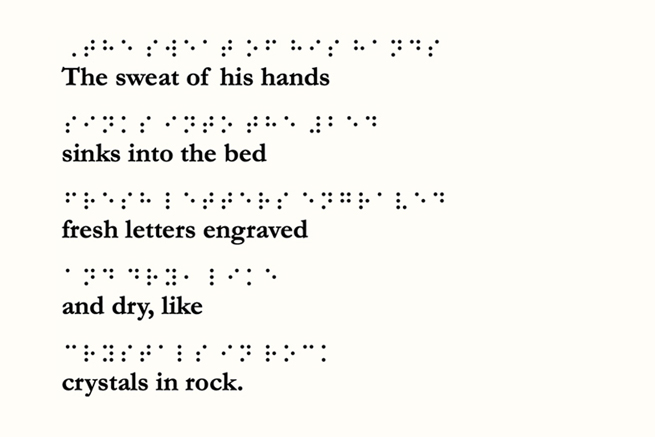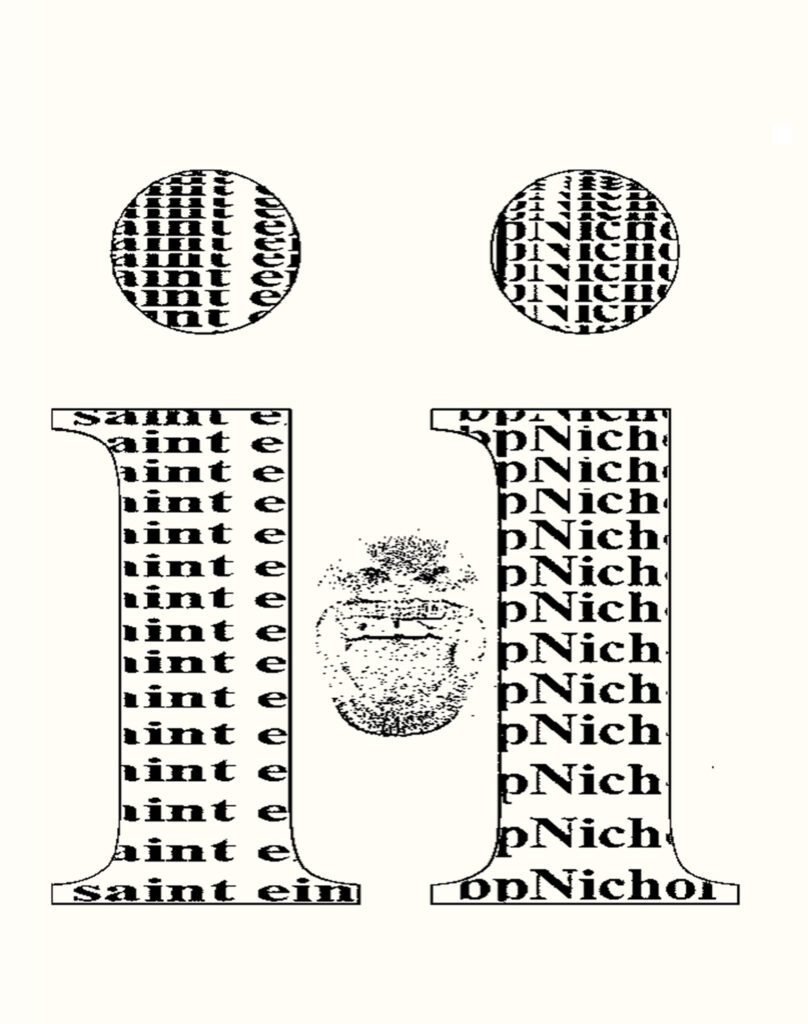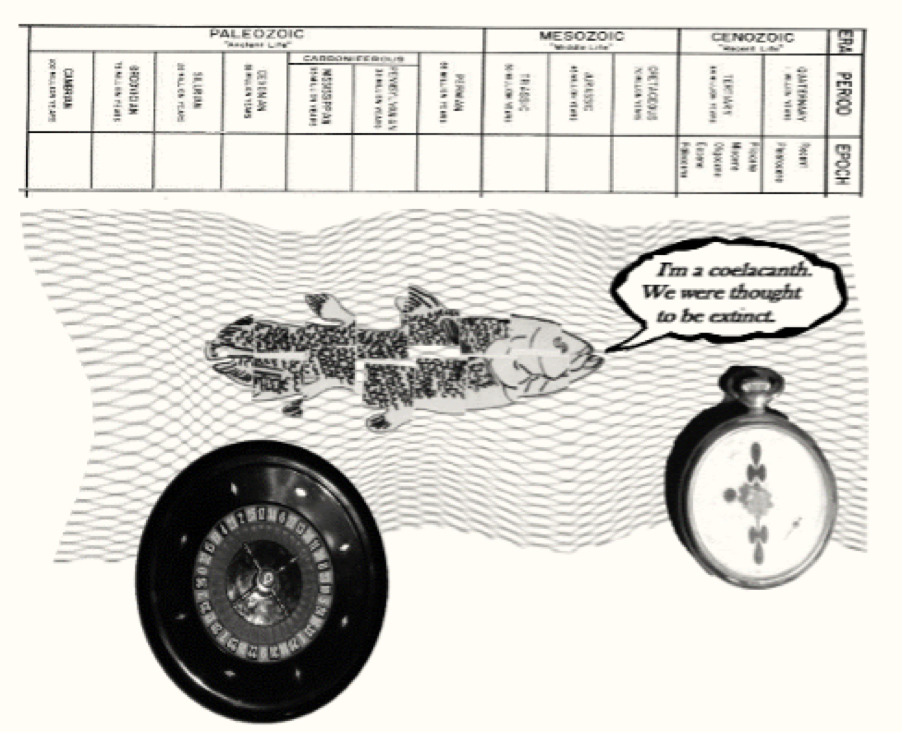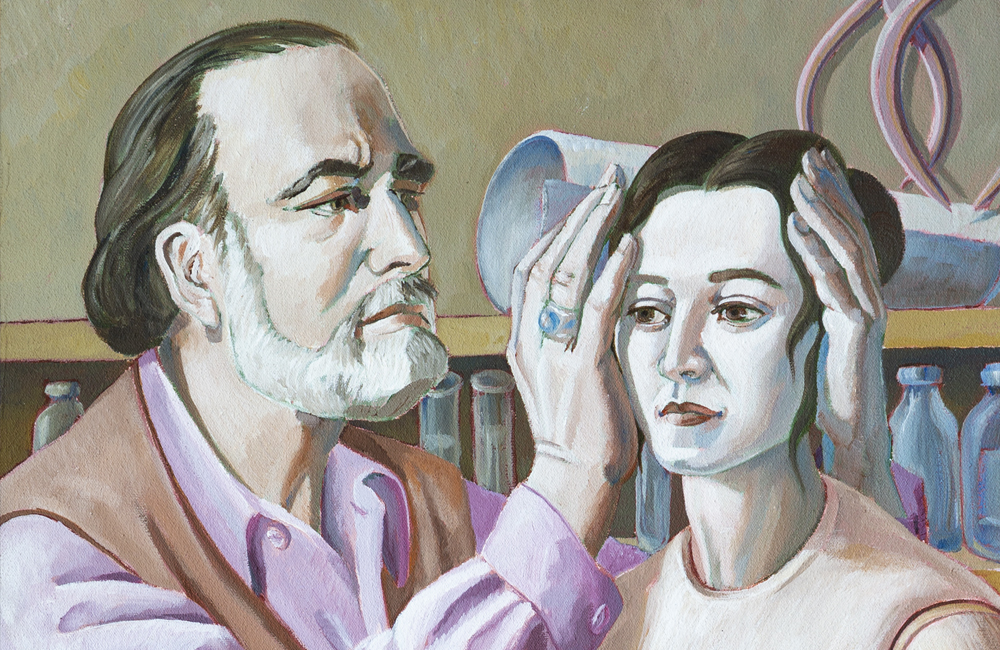Translational Methodologies
Karl Jirgens
These translations are a “homecoming, returning to several prize-winning Canadian, Anglophone and Francophone authors while reflecting the concept of translation as authorship and moving beyond traditional translational forms, by utilizing alternate communication modes including homophony, Morse code, Braille, semaphore, typography, and visual interpretation. Some of these translations enter the field of Ekphrasis. All of these translations reflect the original subject-matter of the chosen poems by interpreting them through appropriate communicative modes. This translation process sometimes demands an initial translation from one language to another, followed by a second translation into an alternate mode, a double-translation. These forms of translation inhabit the poems’ topics. The face à face presentations share original poems with their translations. Explanatory short essays accompany each translation. The door is open to ever more translations. I note that Prof. Norman Cornett is currently translating Innu poet, Maya Cousineau Mollen’s Breviaire du matricule 082 for Caitilin Press. This issue of ellipse is significant. Further cultural exchanges through translations of Indigenous, Francophone, Anglophone, BIPOC, those differently-abled, and authors of other cultures will surely contribute to more nuanced, mutual understandings, and improved, socio-cultural behaviours.
“Clavier d’antan” par Émile Nelligan (1879-1941, public commons). Homophonic Translation:
Homophonic translations render a text from one language into another language based on sound through bilingual punning, often for humorous purposes. In other words, par·o·no·ma·sia /ˌ perənōˈmāZH(ē)ə/ noun: paronomasia; a play on words. Homophonic translation was developed by innovators, including Oulipists approximately 70 years ago. (E.g.; Howard L. Chace’s “Ladle Rat Rotten Hut”, written in “Anguish Languish” (English Language, 1956). Earlier manifestations exist in other languages. See; Forward magazine’s article; “When the Second Verse is the Same as the First in Hebrew” featuring Italian Rabbi, Leon de Modena (1571-1648) whose octet, Kina Sh’mor, reads equally well in Hebrew and Italian. (<https://forward.com/culture/179839/when-the-second-verse-is-same-as-the-first-in-hebr/>). Luis van Rooten’s English-French Mots D’Heures: Gousses, Rames appeared in 1967. Louis Zukovsky’s homophonic translation of Catullus’ Fragmenta was released in 1969. Canadian authors such as bpNichol developed systems moving beyond homophonics into cryptography. Nichol’s “Translating Translating Apollinaire: A Preliminary Report” (Milwaukee: Membrane Press, 1979), uses a cryptographic approach analyzed by Joseph A. Brown and Terry Trowbridge in in their 2009, on-line essay, “Deciphering Translating Translating Apollinaire” (www.researchgate.net).
Rampike magazine features early versions of Nichol’s cryptographic translation of Apollinaire (V.5, #2, pp.4-5), as well as Brown & Trowbridge’s “Deciphering Translating Translating Apollinaire” (V. 21, #2 pp. 14-17). Free back issues of Rampike are on-line c/o the U-Windsor “Scholar’s Portal”; <https://scholar.uwindsor.ca/rampike/about.html>. Homophonic translations dating back to the 1500s and more recently to the 1950s and 1960s generated critical attention, and many imitators. Tracing homophonic origins is challenging since they are part of an oral folk tradition dating back centuries, and relating to techniques of spoonerism, malapropism, and slips of the tongue. Here, Jirgens interprets Émile Nelligan’s post-Symbolist approach (partly influenced by Baudelaire), while remaining consistent with rumours that Nelligan experienced hallucinations, and was schizophrenic. Symbolism predates Surrealism. To differentiate, Surrealism explores the unconscious and isn’t always rational. Symbolism juxtaposes images to signify specific meanings. The following is a homophonic translation of Nelligan’s poem, “Clavier d’antan.”
Clavier d’antan
Émile Nelligan
Clavier vibrant de remembrance,
J’évoque un peu des jours anciens,
Et l’Éden d’or de mon enfance
Se dresse avec les printemps siens,
Souriant de vierge espérance
Et de rêves musiciens…
Vous êtes morte tristement, Ma muse des choses dorées, Et c’est de vous qu’est mon tourment;
Et c’est pour vous que sont pleurées Au luth âpre de votre amant
Tant de musiques éplorées.
Autumn’s Piano
Karl Jirgens
Clever vibrant remembrances,
I evoke the pen of ancient journeys
Etch doors to the moons of Eden’s infancy
She dressed in printed signs
Soaring above experienced virgins
and the rivers of musicians…
Vow, eat, mortal treatments,
My muse chose Doritos,
Hey, check your questionable tournament;
Hey, check your song’s quad pluralism
On ape-lutes vortexes do amend
Taint the musical exploration.
Excerpt from: Grand Hôtel des Étrangers by Claude Beausoleil (Écrits des Forges, 1988, p. 16).
Morse-Code translation: This short poem excerpt has been translated first into English by Karl Jirgens, then into Morse code using a free on-line translation system; This poem-excerpt from Beausoleil’s Grand Hôtel des Étrangers uses codified language. The name “Grand Hôtel des Étrangers” is another name for the Hôtel du Cap-Eden-Roc which is a resort in Antibes on the French Riviera. In 1914, the Eden Roc pavillion was built 400 yards away from the main hotel. Gerald and Sara Murphy, an expatriate young American couple who moved to France in the 1920s, rented the hotel for an entire summer, a unique event for that era. The French Riviera was not typically a summer resort. Instead, it was a winter retreat for the wealthy. With the Murphys came many writers and artists of the Lost Generation, including F. Scott Fitzgerald and Ernest Hemingway. Fitzgerald immortalized the place as the Hôtel des Étrangers in his novel, Tender Is the Night. Marc Chagall made sketches in one of the beachside cabanas in the 1960s. At other times, guests included Marlene Dietrich, Orson Welles, the Duke and Duchess of Windsor, Winston Churchill, the Kennedy family (including JFK), and Charles De Gaulle. Elizabeth Taylor and Richard Burton engaged in an affair and eventually had a honeymoon there. The hotel has traditionally been a favourite site for film-stars, especially during the Cannes Film Festival. The Grand Hôtel des Étrangers holds many secrets evident only to those who understand the underlying codification. This double-translation of an excerpt from Beausoleil’s Grand Hôtel des Étrangers embeds “codified” language to carry the message. Jirgens first translated the text into English, then rendered it into Morse code as a gesture to poetic codification.
Excerpt: Grand Hôtel des Étrangers
Claude Beausoleil
Vous êtes descendu
au Grand Hôtel des Étrangers
vos mœurs
vos désirs
votre nom votre vie
tout ça ne fait pas le poids
repliez vos bagages
cachez vos cicatrices

Excerpt from Soleils d’acajou by Jean-Paul Daoust (Nouvelle Optique, Montreal 1983, p. 78).
Braille translation: This poem excerpt from Jean-Paul Daoust’s Soleils d’acajou speaks of an alternate form of communication. It is a message that comes from perspiration and the touch of a hand, leaving an indelible mark. This poem-excerpt was first translated into English by Karl Jirgens, then into uni-code Braille using the free on-line system; The love connection in this poem, moves beyond vision into the physicality of touch. Here, hands and fingers leaving marks on bedding, can be interpreted through the intimacy of Braille where fingers sense the embossed thoughts of a lover.
Excerpt: Soleils d’acajou
Jean-Paul Daoust
La sueur de ses mains
coule dans le lit des
lettres fraichement gravées
et sèche, comme
les cristaux de la roche.

“song for saint ein” from Zygal by bpNichol (Coach House, 1985, p. 15)
Visual/Typographic Translation: by Karl Jirgens with assistance from Nicholas Jirgens
This visual/typographic translation interprets bpNichol’s “song for saint ein” by situating a pair of lower case “i” letters, one for Gertrude Stein, the other for bpNichol (two “I”s for your 2 eyes) while implanting those two lower case letters with “noisy” sound and letter cascades, one for “saint ein,” the other for “bpNichol.” Here, Stein exists as a pre-existing entity or “noun.” And, Nichol functions as an action or “verb.” Placing an imprint of Nichol’s own mouth (taken from Zygal’s front pages), creates a letter “H” (one of Nichol’s favourite palindromic letter-forms, singing and establishing the relationship between these two authors (past & present). In this translation, the mouth “speaks” of an “existence separate from this page,” thereby linking the two writers when Nichol’s “voice says so.”
song for saint ein
bpNichol
i look at you this way
noun then verb
these are my words
i sing to you
*
no separation no
the same thing
i am these words
these words say so
somwhere i exist separate from this page
this cage of sounds & signs
i am this noise
my voice says so

“DONATELLA Z. DANS LA NUIT DE LA PIAZZA DUCALE” by Nicole Brossard
Originally published in French in Rampike magazine (V.3, #2, p. 8).
Later, published in Au présent des veines (Éditions Les Écrits des Forges, Trois-Rivières, 1999).
Semaphore Translation: This excerpt is first translated into English by Karl Jirgens who then translated it again into semaphore. This double translation responds to the poem’s imagery, by using semaphore as a visual communication that is appropriate to the distance across the spacious Piazza Ducale. The second translation uses the free online semaphore translator. Brossard’s poem speaks of translation, and this double-translation echoes Brossard’s use of a “double-vision” or a “double-time” often found in her literary creations. The duality is evident here; 1) Italy’s Piazza Ducale, a prime example of 15th Century Venetian Gothic architecture, and 2) a poetic impression, to be translated at a future date. It was hoped that visuals of the Piazza Ducale could be integrated into this translation, but photo-copyright issues emerged. However, online images of the Piazza are readily available on the internet, and they reveal that the Piazza does indeed turn luminous and ochre under nightlights. Please google “images, Piazza Ducale” on the internet, open the file, and imagine a poetic semaphore message travelling from sender to receiver at opposite ends of the spacious Piazza.
“DONATELLA Z. DANS LA NUIT DE LA PIAZZA DUCALE”
par Nicole Brossard
c’est la nuit comme dans tous les poèmes
je traduirai un jour cela peut-être d’un
seul regard à chaque tournant dans la nuit
jusqu’à ce que soudain ocre et lumineuse :
la Piazza Ducale
Note; semaphore messages typically conclude with a final flag signal, as follows: 


“Coelacanth” by Christopher Dewdney from, Children of the Outer Dark (Wilfrid Laurier UP, 2007, p. 4). Published earlier in Paleozoic Geology (Coach House Press, 1973).
Visual translation: Karl Jirgens with assistance from Nicholas Jirgens
Christopher Dewdney’s poem responds to the uncanny discovery of a live Coelacanth in 1938, off the coast of East London (South Africa). The discovery of a live Coelacanth astounded scientists who believed this creature was long extinct. Coelacanths are the sole remaining members of a taxon otherwise known only from their fossils which were discovered over 100 years prior to the discovery of the living creature. These fish have no close living relations, and scientists believe they evolved into their current form, approximately 400 million years ago. Dewdney’s poem addresses not only the discovery of a “living fossil,” but speaks of the human sensory reaction to the discovery of the seemingly anachronistic Coelacanth. This poem has been “visually translated” in response to Dewdney’s possibly, ’Pataphysical, and arguably, Cubist poetic form. ’Pataphysics, developed in the late 1800s by French writer, Alfred Jarry, considers the exceptions to rules, and predates absurdism. Cubism deals with juxtapositions of shifting spatial and temporal perceptions, as practiced by Georges Braque and Pablo Picasso. Such shifts in perception are evident in this poem. This visual interpretation combines Absurdist and Cubist elements including a depiction of a non-functional time-piece, a roulette wheel symbolizing aleatory poetics and chance discovery, a Cubist coelacanth with absurd thought balloon, as well as the “coalesced” temporal “nets” that resulted in the unexpected discovery of a living Coelacanth in 1938. This visual translation moves into the realms of Ekphrastic expression.
Coelacanth
by Christopher Dewdney
The existence of
an extinct species
is indicative
not of the circumstances
engendering its uncanny survival,
but the point at which
our nets coalesced
and forced its appearance.
This is not the place
of departure.
The event is invariably
prehistoric.
The five senses register
a vague roulette to it all.
A map
with
no
corresponding
geographical
landmarks.


